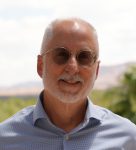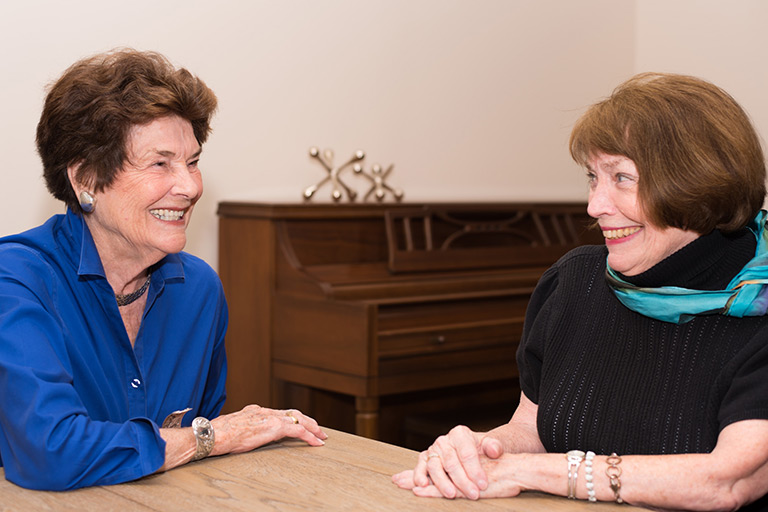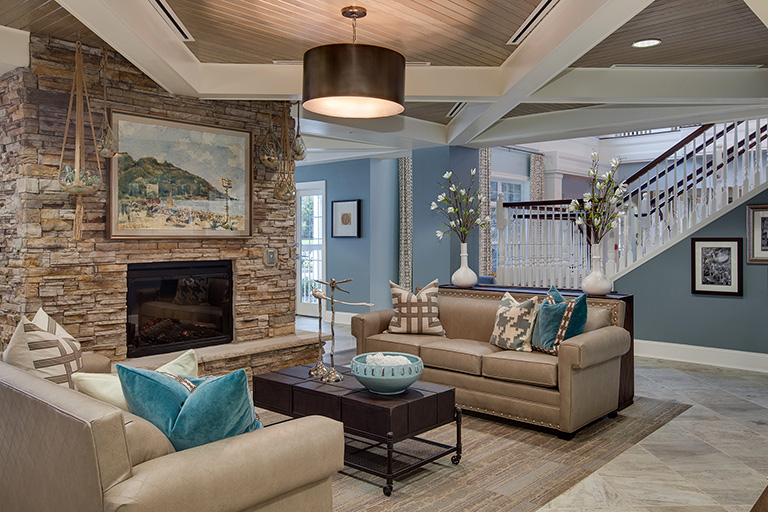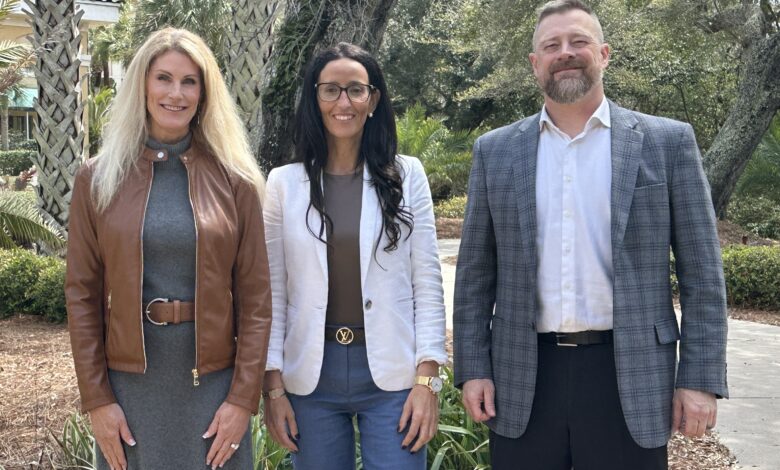
HEALTHTAC East 2025 Panel: Growing Your Portfolio in This Economic Climate
By Jim Nelson | April 21, 2025
AMELIA ISLAND, FL — At the recent HEALTHTAC/Senior Living News executive event here, we hosted senior living leaders for two-plus days of learning, team building, and fun.
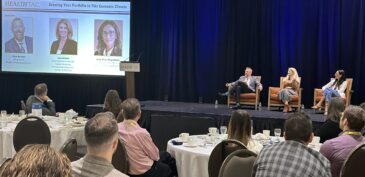
It’s been said that the fourth quarter of 2024 may have been the beginning of senior living being once again seen as a premium investment opportunity, and one panel discussed growth in this economic climate. The panelists who took on that topic were Paul Branin, the EVP of growth for Health Dimensions Group, who also moderated; Lisa Albain, the just-promoted director of development at Presbyterian Homes & Services‘ Senior Housing Partners division; and Amy Silva-Magalhaes, COO for The Bristal Assisted Living.
PAUL BRANIN: What does growth mean to your organizations? Is it internal growth with a focus on improved performance, external growth through acquisition or development, or a combination of both?
AMY SILVA-MAGALHAES: At The Bristal, it’s a combination of both. We’re always looking at, “How are we going to continue to deliver upon our mission? How do we continue to meet the expectations of key stakeholders — whether it’s your REIT, private equity, your owners, your consumers, or your team members?”
We’re always looking at, “What can we do to continue to build synergies among strategic partnerships, but really grow those core pillars on the external?” We’re always looking at going into markets that ultimately are going to continue to build our internal. I laugh, because wherever there’s a Starbucks I want to be, because they do some of the best market research out there. You’ve got to be nimble; you have to be really scrappy when it comes to your pro formas — meaning your forecasting, your assumptions — and looking at, “Is this project going to be successful?”
LISA ALBAIN: I would agree. The Silver Tsunami is upon us: In 2030, 20 percent of the United States population will be 65 and over. And within 2040 to 2050, that number will increase three times. The need is so great for seniors. The work that you all are doing here is fantastic; we’re not competitors, we’re co-laborers. There’s just no way that we’re going to be able to meet this demand any one company by itself. We need each other.
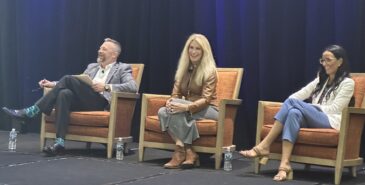
At Pres Homes, we’ve got 11,000 units; we’ve got 1,200 units of skilled care, and we’re looking in the next 15 years to add another 24,000 units. That being said, Amy was referring to the strategic approach to development; we need to be strategic. The economy has been an opportunity for professional growth the last few years, to develop, and you look at where we’re going; there’s a lot of unknowns, but what we do know is the need is going to be exponential. We know that these people need our services, and it’s on us to be creative and come up with a plan to be able to serve those seniors who have blazed the trail for us so that we have the life that we have now. Our challenge is to find a way to be resourceful, to be quick and nimble, to be creative in our financing, whether it’s building new, through acquisitions, or through expanding your home- and community-based services.
PB: For Health Dimensions Group, we are in growth mode, mostly through management contracts. In light of all this acquisition that we’re doing, we have recently developed a transition team. Historically, what a lot of operators have done, and I certainly did this as an RDO, was when we brought on a new community it went straight into a region. That’s stressful, so we pulled that away from the operations team; when we bring new buildings in, we’ll put them into a transition team and implement all of our systems so that eventually they’ll be ready to graduate into a full operations team. We’re no longer under any pressure to make sure that we’ve got to get them out in a certain time period. They can stay there for as long as they need to until some of their operations are stabilized.
Lisa and Amy, what are some of the additional concerns or considerations that drive your decision making that might not exist in an economy that’s more favorable to development?
LA: Each project that we develop is unique. I think that the key to development is really understanding your market, understanding what the needs are with the current seniors, but also staffing. We do a tremendous amount of due diligence before we ever go into a market. We don’t just look at what we can find online; we’re boots on the ground, talking to providers, talking to municipalities, really understanding what the need is. And what we’re finding is that development has to have a process, but you need to be flexible within that process to make that project work.
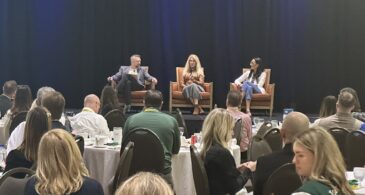 For example, we did a new development on the old Ford Motor site property in St. Paul, Minnesota, where they manufactured the Ranger trucks. It’s a 122-acre parcel of land that’s mixed use now; they spent 10 years doing an environmental cleanup in that area and there’s over 3,500 units of housing, of commercial, of retail. When we went into that project, we were not sure because it was expensive to build there. It was an SB2030 project [Minnesota’s Sustainable Building 2030 energy standard] where we had to meet certain LEED requirements — our projects are LEED Gold — so there was expense there, and our Pres Homes model, our bread and butter, is middle market. When we were looking at the middle market, we just couldn’t make it pencil because of the cost of construction. So, we had to take a risk, go big or go home. We decided to go big, and we went all-luxury for that community; we reached stabilized occupancy within nine months of opening, with 300 units. That, in turn led us to develop a phase two, and that’s 125 units of independent living; that community filled.
For example, we did a new development on the old Ford Motor site property in St. Paul, Minnesota, where they manufactured the Ranger trucks. It’s a 122-acre parcel of land that’s mixed use now; they spent 10 years doing an environmental cleanup in that area and there’s over 3,500 units of housing, of commercial, of retail. When we went into that project, we were not sure because it was expensive to build there. It was an SB2030 project [Minnesota’s Sustainable Building 2030 energy standard] where we had to meet certain LEED requirements — our projects are LEED Gold — so there was expense there, and our Pres Homes model, our bread and butter, is middle market. When we were looking at the middle market, we just couldn’t make it pencil because of the cost of construction. So, we had to take a risk, go big or go home. We decided to go big, and we went all-luxury for that community; we reached stabilized occupancy within nine months of opening, with 300 units. That, in turn led us to develop a phase two, and that’s 125 units of independent living; that community filled.
Getting back to your question, I think you really need to be open minded to doing things a little bit differently in order to serve the seniors that need our service.
ASM: I would echo what you’re saying there, in regard to the labor pressure. We ran a scenario a few months ago looking at what we were paying average wages before COVID, and what we are paying now. That’s what’s eroding our profit margins when you’re looking at your forecasting or your assumptions on your pro formas. Plus, you have rising construction costs. You have supply disruption that continues to happen in the market, and you have your in-place residents — how much are you going to be able to continue to push rate on them? I operate in New York City; I have two assets there, and we’re charging $25,000 a month — an eight percent increase on $25,000, these are big dollars, but if you look at the wages that are associated and the development costs that are associated with these projects, they’re material. However, the markets are dense enough to be able to develop. In New York City, there were about six or seven assets that all came to the market at the same time, and I remember thinking, “How are we all going to get $25,000 a month?” And we’re all doing really, really well — our competitors and ourselves.
So, making sure when we are developing it goes back to penciling it out, making sure it makes sense. What are the wages associated? We personally like high barrier-to-entry markets. If there’s a competitor next door, I’m probably going to develop right around there, too. Because you’re filling, your occupancy is growing, you’re producing some of the margins that we’re looking to get, and if the market can support it, we’re going to be your neighbor.
PB: What would you say is that one recent win that you are most proud of?
ASM: I think it goes back to the human capital side. My organization just celebrated 25 years being in operation, and we’re really proud about it. I would say a win for us is retaining the human capital and having the people that are able to execute on our mission and drive key performance results.
LA: I know it was really tough for all of us during COVID; the turnover was so great, the burnout was exponential, and the wage increase; our company did a complete deep dive into the rates that we were paying just for staff retention. It was a very tough time. When I look back at some of the victories that we have had over the last year, through our different revenue streams we’ve been able to increase our employee wages, expand our ministry through new construction and home- and community-based services serving seniors. You were talking about eight percent rent increase [for] these residents who are already paying so much, and during COVID, with all the things that I just mentioned, we were able to hold rents and not put that burden back onto our residents, which was a win. That’s how you get affordability over time — you build a beautiful community, and you just don’t keep up with market, and after 10 years you’ve got a very affordable, beautiful community that’s serving seniors that may not otherwise have been able to live in a community like that.
PB: Anything else?
ASM: For the operators in the room, I would just say get curious. Ask some questions of your senior executive team. Do you really understand what a recap is? Do you understand what cap rates are? Do people know what exit proceeds are? Because the one key takeaway when I was an ED for 13 years, and I had some great people I had the privilege of working with, they once said to me, “Every dollar of net operating income that you’re able to generate equates to x.” And oftentimes it was around $16. If you’re on the sales side, even if you’re on the engagement side, speak to your operator, speak to your C-suite and ask them these questions, because you are the driver that’s going to drive better impact when it comes to a recap. Know your business.
LA: I mentioned the number of seniors that are aging in our country, and there is such great need there. I was an operator before I moved over to the dark side of development, and I saw firsthand the lives that are impacted by what we are doing. That is such a tremendous honor, such a tremendous responsibility, and I am just so glad to partner with you all in this mission to serve our seniors.
